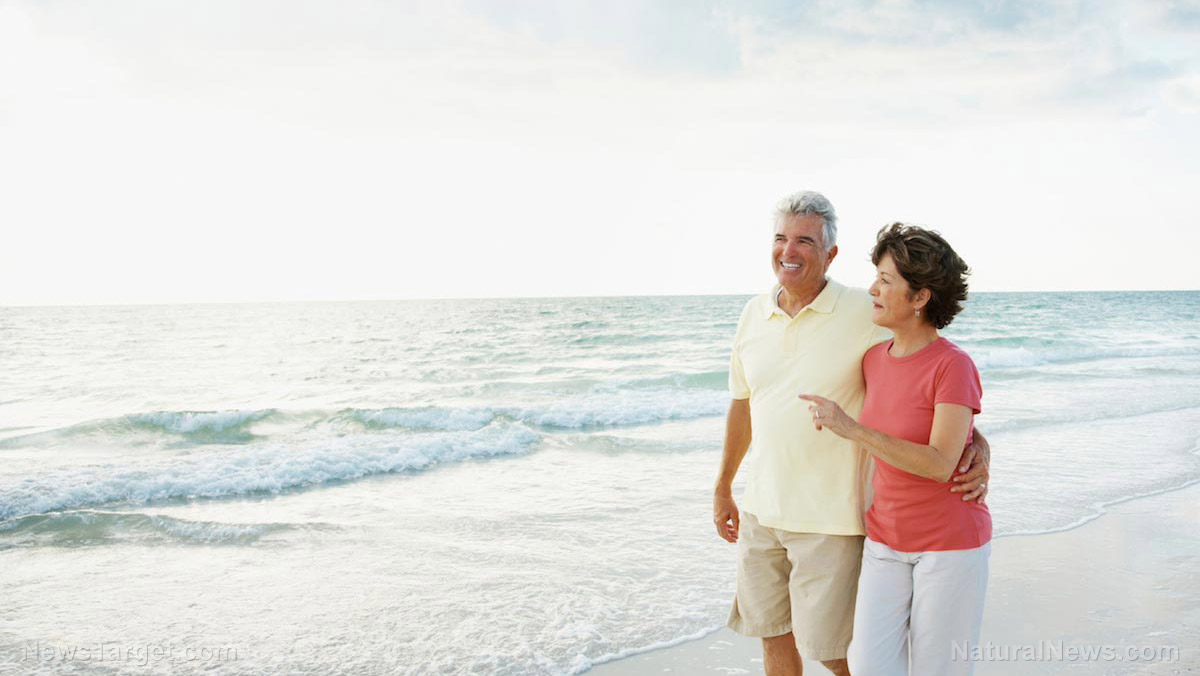Use it or lose it: Seniors with osteoarthritis greatly benefit from a brisk walk every day
02/11/2020 / By Edsel Cook

Older adults suffering from knee osteoarthritis could benefit from brisk walking and other forms of physical activity. A recent study found that regular movement makes it easier for the elderly to move and complete everyday tasks.
In the U.S., osteoarthritis — where cartilage wears away, causing the bones to rub up against each other — is the most common form of arthritis among the elderly. Up to 13 percent of older adults aged 60 and above suffer from osteoarthritis of the knee. Two out of five patients with symptomatic knee osteoarthritis find that their condition significantly affects their quality of life.
Currently, there is no known cure for osteoarthritis of the knee. Patients who experience symptoms often take pain-relieving pharmaceutical drugs that have various adverse effects. Advanced cases, meanwhile, require knee surgery.
In a recent study, lead author Dorothy Dunlop, together with researchers from Northwestern University, investigated the impact of physical activity on impediments attributed to osteoarthritis of the knee. The team’s findings were published in the American Journal of Preventive Medicine. (Related: Electroacupuncture eases symptoms of knee osteoarthritis.)
One hour of exercise weekly helps older people maintain their physical ability despite osteoarthritis
The Northwestern team drew their data from the Osteoarthritis Initiative, a national research study that collected and evaluated medical information from patients. They chose 1,500 individuals who reported aches, pain and stiffness in their lower extremities — symptoms associated with osteoarthritis.
At the beginning of the experiment, the participants did not have any disability. The researchers tracked the participants’ physical activity using accelerometers and followed them clinically for four years.
Dunlop said that she and her team wanted to know what kind and level of physical activity might help patients avoid getting disabled by osteoarthritis as they age. Their results showed that spending one hour each week on moderate-to-vigorous physical activity helped preserve the mobility of elderly participants from the disabling effects of osteoarthritis.
Those who maintained this level of physical activity did not experience any problems completing ordinary tasks. They could change their clothes, take a bath and move around a room or cross the street at a fast and safe pace.
To avoid disabilities, seniors with osteoarthritis are advised to maintain physical activity
Devoting a weekly hour to physical exercise led to an 85 percent decrease in the risk of elderly patients with osteoarthritis developing mobility-related disabilities. It also contributed to a 45 percent lower risk of developing a disability that would hamper day-to-day living.
The participants didn’t need to hit the gym or adopt a training regimen to prevent osteoarthritis-related disabilities. Brisk walking provided sufficient amounts of physical activity to protect them.
Conversely, seniors who did not spend an hour weekly on physical exercise developed various impairments.
Nearly a quarter of the participants had excruciatingly slow walking speeds and failed to finish crossing the road before the traffic lights changed color. Almost as many patients reported issues in performing their routine in the morning.
The aim of the Northwestern study was to help older people who wish to avoid chronic disease but find it difficult to reach the recommended 2.5 weekly hours of moderate-to-vigorous exercise. The researchers believe older adults may find it easier to engage in physical activity for at least one hour each week.
“One hour a week is a stepping stone for people who are currently inactive,” Dunlop said. “This is less than 10 minutes a day for people to maintain their independence.”
Sources include:
Submit a correction >>
Tagged Under:
aging, aging secrets, alternative medicine, anti-aging, arthritis cure, brisk walking, elderly, knee osteoarthritis, physical activity, prevention, research
This article may contain statements that reflect the opinion of the author
RECENT NEWS & ARTICLES
COPYRIGHT © 2017 NATURAL CURES NEWS





















